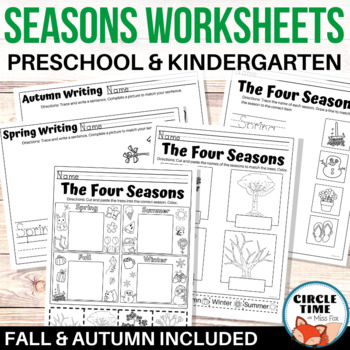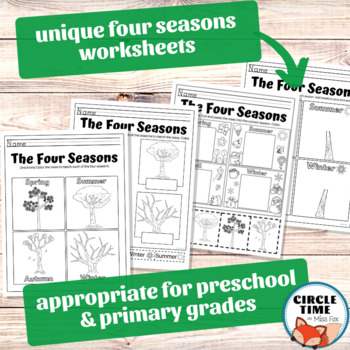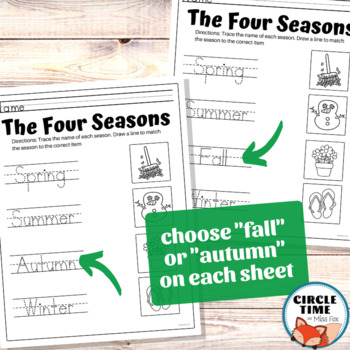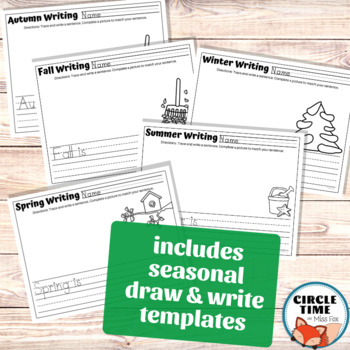Preschool, Kindergarten Four Seasons Worksheets
- PDF
What educators are saying
Description
Ten unique printables with fall and autumn alternatives for each page. A variety of activities including cut & paste, tracing, and drawing. Seasonal writing templates included!
You receive:
- Standard letter size PDF (17 pages)
- Ink-saving black line printables
- 6 unique worksheets
- 4 seasonal draw and write templates
- 7 "autumn" alternative sheets
See preview for a look at each activity.
Perfect for preschool and primary grades. Use for morning work, centers, or as an independent activity.
Students will:
Identify seasonal items and symbols and match to corresponding seasons
Show seasonal changes on a tree with flowers/leaves/bare branches
Trace the four seasons words
Draw and write about each individual season
Practice fine motor skills with tracing, cutting, pasting
You might also like:
Seasonal Clothing Sorts, Cut and Paste
-------------------------------------------------------------------------------------------------
Click the green button with the star to follow me on TPT for 50% off new listings for 24 hours!





